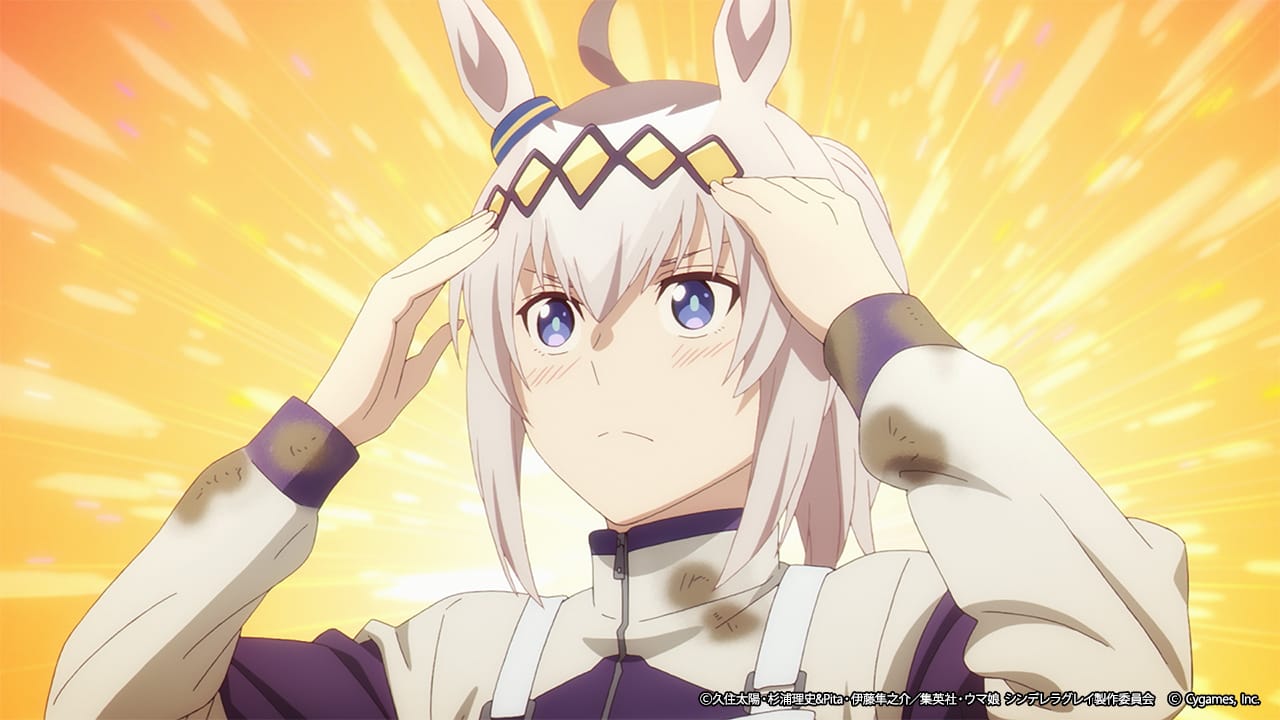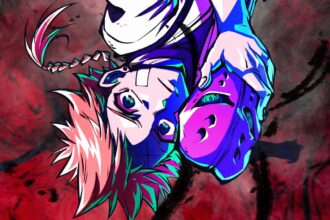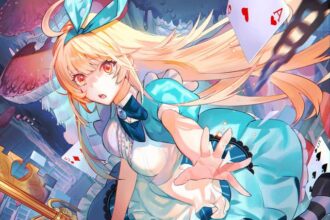The question of “What do you mean this anime is biographical?” is probably one of my favorite parts of introducing Uma Musume to people, as I watch the look on their faces contort when they learn that the franchise is historical fiction. Most people at first accept that the horses are named after real-life counterparts, but the grin on my face as their eyebrows raise as I explain to them the quirks and personality are all part of a greater picture, that being the authentic depiction of the storied and tumultuous history of Japanese horse racing, has become one of my favorite parts of discussing the franchise with people. Whether it is the stunningly miraculous victories of Tokai Teio overcoming three fractures, the great struggle of Japanese horses to surpass Symboli Rudolf’s towering legacy, or the legendary reign of the End of Century Emperor T.M. Opera O, all of these seemingly supernatural figures in Uma Musume are simply humanized representations of their real-life figures; Uma Musume is biographical fiction, exactly so.
But perhaps none of these conversations would happen were it not for one specific horse, a horse whose legacy was so impactful and so inspiring that he crossed the gender divide in horse racing fandom and brought the sport to national popularity. There is a world in which this article, or Uma Musume itself, would have never happened were it not for the unlikely success and superstardom of a rural horse that shook the very earth under his hoof. A grey horse, a monster on both turf and dirt, and perhaps one of the greatest embodiments of the Cinderella Story in sports, the one and only Oguri Cap.
Fairy Tale Beginnings


The “Cinderella Story” in the world of sports often refers to scrappy underdogs, who either lack the money, prestige, or expectations of bigger players, instead surprising the competition and the world with strings of impressive victories. It’s often not just enough for a “Cinderella” to win, but winning often accompanies a huge upset, toppling the odds in their favor and currying the favor of the fans in the process. It’s often slightly different from a simple underdog David beating Goliath, but instead a successive score of victories that continually curry attention and support from the crowd.
Of course, the Cinderella Story subject is usually a person, or group of persons, which makes Oguri Cap even more unusual in that regard. But the “Gray Monster” earned his success and legacy against all expectations to the contrary, beginning with inauspicious beginnings in rural Kasamatsu Japan. Of course, not every Cinderella Story requires the protagonist to be poor and unfortunate, and in many cases, sports Cinderellas can come from all manner of backgrounds, but what matters is that their story surprises and captivates the world around them.
For Oguri Cap, that was a tall order: the world of horse racing is by no means forgiving or kind, and all manner of tragedies, could-have-beens and wannabes pepper its landscape, and in many cases perhaps Oguri Cap could have simply lived a different life had his trainers not taken a chance on him. Much like the Oguri Cap of Uma Musume, the real Oguri Cap was plagued by bad knees as a foal, with the idea that he would ever run to any great success seemingly a far off fantasy. In his maiden race, he lost to March Tosho, a loss that caused his trainers to notice his odd gait and step was due to a foot infection. Although he would again lose to March Tosho during his fourth ever race, Oguri–and by proxy, March–would go on to gain notoriety for never losing a single race again in Kasamatsu, igniting the legend of the “Gray Monster.”
The Kasamatsu Kid


The 2025 Kentucky Derby ended a few months ago, marking the 151st running of the race, and also marking another period in which horse racing (at least in the United States) remains a niche and somewhat maligned sport, viewed as one frequented only by rednecks and gamblers, with a history of animal mistreatment and abuse. Much of this is due to misunderstanding and cultural attitudes towards the sport, but in Japan, horse racing, or 競馬 (Keiba), maintains a steady and popular following across the country, appealing to men and women of all ages and focusing on the majesty, competition, and pageantry of the sport with a focus on the horses themselves as the stars. Japanese horse racing is so popular that it can support two national organizations, the more widely known Japanese Racing Association, or JRA, and the National Association of Racing, or NAR. The JRA handles mostly “national” races, and is known as “Chuo Keiba”, or “Central”–the very same “Central” that Uma Musume makes mention of frequently–while the NAR handles localized racing at “Chihou Keiba”.
“Chihou Keiba” is where Oguri Cap’s story began and nearly ended, as local horse racing does not often spawn stars who cross over to Chuo Keiba, and especially not at the period in which Oguri Cap was racing, but then this wouldn’t be a Cinderella Story if that were the case, would it? Oguri Cap’s explosive races and increasing number of wins in Kasamatsu began to raise the question of whether Oguri Cap could, indeed, be such a star. Transferring from the mostly dirt tracks of Kasamatsu to the turf of Central wasn’t the only major change, but also the need for new licensing–which Oguri’s original owner lacked–and the increased competition and pedigree of JRA racers meant that Oguri Cap’s “pumpkin” moment might arrive before the ball even started.
And then Oguri Cap won two G3 races in a row, silencing those fears.
The Oguri Cap Revolution


While modern horse racing in Japan is an all ages and all gender attraction, it wasn’t always this way; the sport predominately appealed to men, especially those who enjoyed gambling. The popularity of the sport rose and fall based on the mostly consistent success of JRA race horses like Symboli Rudolf, whose impressive record also belied a larger problem for the sport: if no one could surpass him, where did things go from there, and if only JRA race horses succeeded, was there anything really interesting to draw new eyes to the sport?
Oguri Cap likely never worried about those questions–by all accounts, the only things he ever wanted to do was eat, sleep, and during one fateful Japan Cup, get a date–but he certainly provided the answer, intentionally or not. Oguri Cap’s amazing debut in the JRA with 2 G3 wins created a stir when it was revealed that he would be ineligible to compete for the Triple Crown; the somewhat overnight success of Oguri Cap moving from the NAR to the JSA came at the cost of his not having been registered for Classic races, making him ineligible to compete in the Satsuki Sho, Japanese Derby, and Kikka Sho. Fans of the gray stallion protested on his behalf, demanding to see this new and upcoming horse compete in some of the biggest races of his debut year, but change wouldn’t come until 1992, when the JRA formally accepted a change to the rules, aptly titled “The Oguri Cap Rule”.
In Uma Musume, the recent films–Road to the Top and Beginning of a New Era–both heavily feature the stunning and charismatic T.M. Opera O, a legendary horse whose seven G1 victories–five of which were continuous–is seen speaking to Oguri Cap and being watched by her in the stands, even referring to her as “Oguri-dono”, paying the highest level of respect to the unassuming gray haired horse with an appetite.
So, why is any of that relevant, you may ask? Because as I said, without Oguri Cap, the history of horse racing in Japan, and Uma Musume itself, may not exist in current form: because without Oguri Cap, there would be no Oguri Cap Rule. And without the Oguri Cap Rule, there would be no T.M. Opera O, the first horse to ever be eligible for its application.
Oguri Gals, or Don’t Underestimate Women with Money to Burn
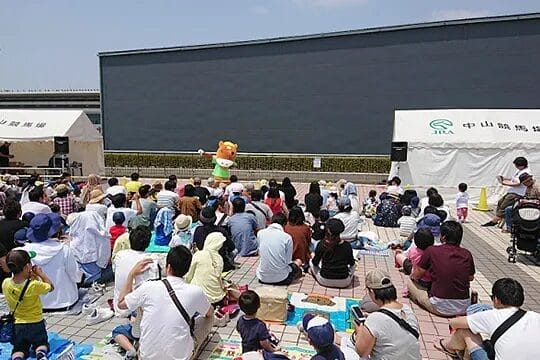

Visitors to JRA races or Turfy stores in Japan (Turfy being the mascot of the JRA) often go for one piece of merchandise over almost all others: Idol Horses. Plush representations of JRA stars, the Idol Horses are the best selling items in the JRA catalogue, with historically popular and current stars alike lining the walls of shops and accompanying racing fans on their photo journals to the track and beyond, with the JRA even selling small clear plastic bags that perfectly and safely houses your favorite horse companion for your travels. While selling stuffed toys isn’t that surprising given the popularity of anime and video game goods ranging from plushies to pillows and pendants, the Idol Horses have been a staple of modern horse racing culture since the late 80s…
You’re probably figuring out where I’m going with this by now, right?


Correct, dear reader: Oguri Cap was one of the first horses to receive an Idol Horse, and whose popularity amongst women spawned the term “Oguri Gal”: women whose love of horse racing stemmed from their passion for the Gray Monster, and who showed their love for the handsome glutton by gobbling up any and all merch of him as fast as it could be printed. Oguri Cap’s plush sold over a whopping 10 million units, even popping up as coveted crane game prizes. Oguri-mania took the racing world by storm, transforming coverage of the sport and its popularity in ways that are still being felt today, as JRA advertisements consistently focus on presenting the sport to both men and women, young and old, and took the momentum of Oguri Cap’s popularity to grow the audience of horse racing to the place we find it now, and the very popularity and spark of creativity that delivered Uma Musume by mixing horse racing with cute anime girls.
The Ball before Midnight: Oguri Cap’s Career
It is always a little funny to provide a spoiler warning to historical events, but as I mentioned in the introduction, I often find that many Uma Musume fans are surprised that the races represented in the series’ media (aside from the races in the game) are all based on and reflect the real races that inspired them. That being said, if you are interested in Uma Musume and Oguri Cap due to Cinderella Gray, I will extend that much of what I will talk about in this section could be considered spoilers to what happens in the manga and will happen in the anime as it continues to air, so fair warning!


After winning those G3 races but being denied the ability to participate in the Classics, Oguri Cap found other ways to make a name for himself, consistently racking up wins and notoriety before finally making an appearance in classic races, where one of his first rivalries began: Oguri Cap and the “White Lightning”, Tamamo Cross. The battle of the two grays caught the eye of racing fans, but Oguri often found himself unable to defeat Tamamo, losing their initial bout, and marking the first ever loss for the seemingly unbeatable Oguri Cap in the JRA. Revenge would be denied, as the 1988 Japan Cup rematch between the two resulted in another loss, with Oguri Cap coming in third at the behind Tamamo Cross and the mysterious American horse Pay the Butler (known as Obey Your Master in Uma Musume). Oguri Cap finally overtook Tamamo Cross in the Arima Kinen, which was Tamamo Cross’ final match, passing the mantle of dominant gray from one to the other.
As Oguri Cap entered 1989, he had been racing for 4 years, and the stardom had begun to set in fully, with Oguri Cap constantly being a favorite in his races. The two other favorites, Super Creek and Inari One, helped comprise a group known as the “Heisei Top Three” for their continual domination of Japanese races, but none of them were prepared for perhaps one of the most interesting and bizarre races in Japanese horse racing history: the1989 Japan Cup.


Despite the name, the Japan Cup had eluded victory from Japanese horses, with only Katsuragi Ace (1984) and Symboli Rudolf (1985) winning the race since its inception in 1981. Oguri Cap had seemed a favorite–or perhaps a hopeful dream–for the race since his debut, but sadly none of the Heisei Top Three would claim the title. In fact, the next Japanese winner of the Japan Cup wouldn’t arrive until 1992, in the form of Tokai Teio.
Despite not winning, however, Oguri Cap’s performance in the 1989 Japan Cup is itself still notorious. There are 2 things Oguri Cap is known for in his life: racing, and eating, often showing very little interest in other things at times, but the eventual winner of the 1989 cup, a filly named Horlicks, had drawn Oguri Cap’s attention, with some describing him as “infatuated” by her. But that detail is only important for the end of the race; the 1989 Japan Cup was a bizarre race for many reasons, least of which were the competitors: For example, Horlicks, a lonely horse from New Zealand, was often accompanied by a pheromone smeared mirror in which she could see her reflection, which helped calm her melancholy. The energy for the Japan Cup was electric, with a crowd of 140k people, and the race certainly lived up to the hype: during the running, the race broke records for both 1800m and 2200m, caused by the pace set by Ibn Bey and Hawkster; repeat competitor Pay the Butler was summarily dusted, and Super Creek and Inari One similarly couldn’t keep up with the two pace setters, until the unexpected surge by Horlicks in the fourth corner sent the race and fans into overdrive, because fast on Horlick’s heels was none other than Oguri Cap. The crowd cheered so hard that Horlick’s jockey, Lance O’Sullivan, stated he could feel the crowd as “vibrations in his body,” which weren’t for him; his brother, Paul, noted who everyone was there to see:
“Oguri Cap was the idol at the time and they had all types of merchandise; Oguri Cap caps and t-shirts. There were banners up for him.” But Oguri Cap was unable to clinch it, losing by a neck in a near photo finish, and marking a turning point in his career.
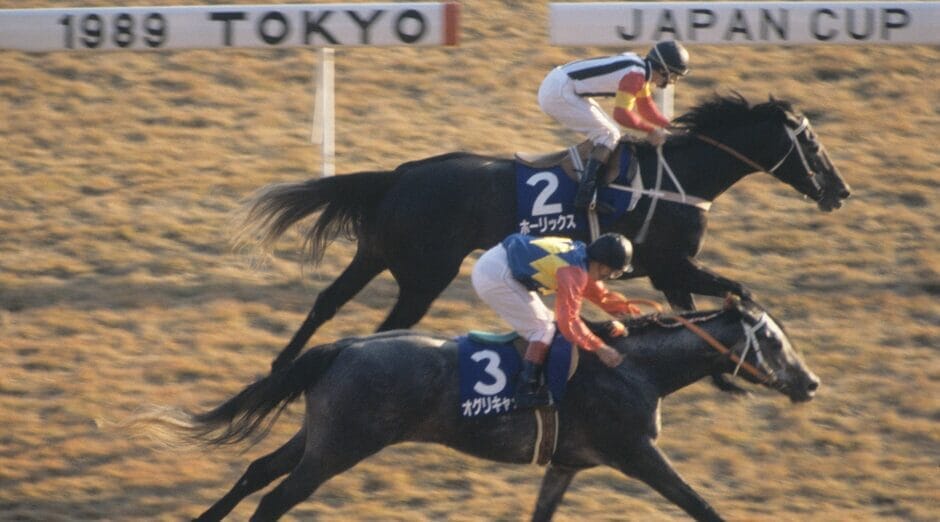

Because every Cinderella Story has a set stopping point, just as much as it has a magical beginning.
The Stroke of Midnight: Oguri Cap’s Decline and Retirement
Whether it was pressure or simply exhaustion, Oguri Cap’s career was certainly destined for an eventual end, and 1990 marked the final year of his storied career, with more losses than wins to know it by. Oguri Cap seemed unable to pull out the stellar wins of his earlier career wins, with some of his previous rivals and new blood alike looking to take down the Gray Monster. Oguri only won two races in his final year: the Yasuda Kinen and the Arima Kinen, a bittersweet and fitting final race for him as the Arima Kinen was both his moment of success, defeating Tamamo Cross, and the “stroke of midnight” in 1989, losing to Inari One and Super Creek and placing a disappointing fifth.


His final race still holds the record at the Arima Kinen for the largest turnout at the track at 177,779 people, which was only 20k short of the overall JRA record, and Oguri Cap ensured that his long-loving fans and supporters didn’t go away disappointed by shocking everyone with a stunning and decisive victory in his last race, defeating then up and coming Mejiro Ryan for the crown.
Like the true superstar he was, Oguri Cap’s retirement tour had multiple stops, taking him to Kyoto, Tokyo, and back home to Kasamatsu; the stop in Kasamatsu became infamous for the fact that 25,000 people attended the his ceremony, while Kasamatsu itself only had 23,000 residents. Musical artist YUKARI produced “Oguri’s Song,” which became so popular it sold out on release, and Oguri Cap would continue to be popular and idolized in his retirement, with fans able to visit him during his stay at Yushun Stable. Sadly, Oguri Cap was euthanized in 2010 after a severe tibia fracture, but the legend of the “Gray Monster” lives on.
Oguri Cap’s Magic Slipper
All fairy tales come to an end, and for most “Cinderella Story” stars, those ends tend to come on the heel of defeat. While Oguri Cap’s decline is no different, it would be impossible to say that the horse’s legacy doesn’t continue to reverberate through the racing world and anime world today. Cinderella Gray, the anime based on the Uma Musume manga retelling of Oguri’s life and career, is one of the breakout hits of the 2025 anime year, delivers her story to a brand new audience to experience for the first time. Cinderella Gray’s success has already had an impact on the racing world: Kasamatsu has had numerous Uma Musume themed events and increased tourism to see the real-life sights of both the series and the real horse. As the manga approaches the end of Oguri’s career and thus its publication, the anime has begun retelling the story for a new audience, and continues to introduce the fairy tale career of the “Gray Monster” to new fans and new generations.


There very likely won’t be another horse like Oguri Cap, at least perhaps not until horse racing once again needs a star to rescue it from obscurity. And even when horse racing needs a new hero, they still won’t be Oguri Cap, because each star of a generation has been truly unique, like all horses are. Born underweight and with bad knees, Oguri Cap overcame all the odds to burst onto the national and global scene, securing his legacy in horse racing history and helping the sport boom around him. Not bad for a horse with an appetite so voracious he ate his own bedding in protest of a diet and who wanted to do very little but eat or sleep when he wasn’t running. The legend of the “Gray Monster” will live on, ready to help enchant the next person who needs to know that Uma Musume is, in fact, historically accurate fiction, and not just cute horse girls doing cute things; that part’s just extra.
Works Cited
- “1989 Japan Cup ジャパンカップ 日本盃.” YouTube, 27 Nov 2006, https://www.youtube.com/watch?v=KDzYTSGrHAs. Accessed 19 May 2025.
- “2010.07.07 Racing Legend Oguri Cap Dead at 25 – News – Horse Racing in Japan.” Archive.org, 2025, web.archive.org/web/20100924032038/japanracing.jp/_news2010/100707.html. Accessed 19 May 2025.
- Cox, Michael. “How a Second-Hand Dressing Mirror Helped Horlicks Win the World’s Second-Richest Horse Race.” Asian Race Reporting, 25 Nov 2022, https://asianracingreport.com/how-a-second-hand-dressing-mirror-helped-horlicks-win-the-worlds-second-richest-horse-race/. Accessed 19 May 2025.
- “Horlicks Wins Japan Cup.” UPI, 26 Nov 1989, https://www.upi.com/Archives/1989/11/26/Horlicks-wins-Japan-Cup/6079628059600/. Accessed 19 May 2025.
- JBIS Search, JBIS, https://www.jbis.jp/race/result/19891126/105/10/. Accessed 19 May 2025.
- “Oguri Cap.” Uma Musume Wiki, Fandom, Inc., 2025, umamusume.fandom.com/wiki/Oguri_Cap. Accessed 19 May 2025.
- “Oguri Cap.” NamuWiki, 18 May 2025, en.namu.wiki/w/%EC%98%A4%EA%B5%AC%EB%A6%AC%20%EC%BA%A1. Accessed 19 May 2025.
- “JRAポスター ヒーロー列伝コレクション.” Jra.jp, 2016, jra.jp/gallery/ads/heroes/index.html. Accessed 19 May 2025.
- “Untitled.” JRA, https://www.jra.go.jp/gallery/column/syouzou/pdf/2018-22.pdf. Accessed 19 May 2025.
- Wikipedia Contributors. “Japan Cup.” Wikipedia, Wikimedia Foundation, 9 Apr. 2025.
- Wikipedia Contributors. “Oguri Cap.” Wikipedia, Wikimedia Foundation, 14 Apr. 2025.
- Wikipedia Contributors. “Symboli Rudolf.” Wikipedia, Wikimedia Foundation, 29 Mar. 2025.
